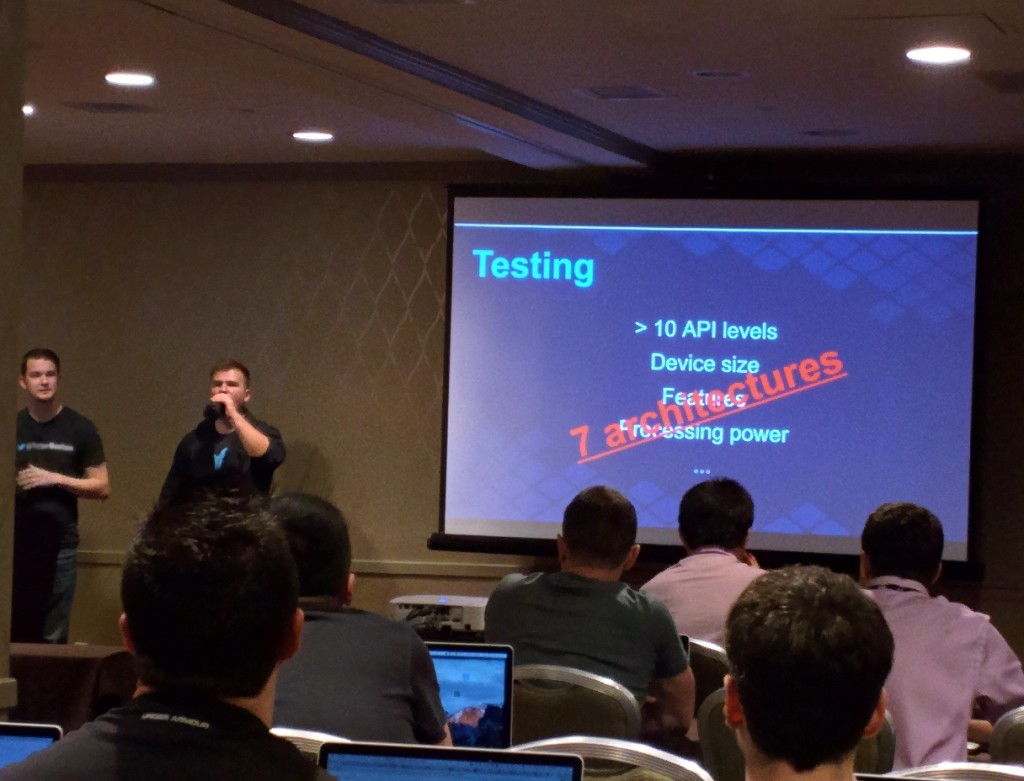by: Konstantin Mandrika (@kmandrika) and Matt Willis (@mattwillis) from Twitter
Make sure you are using the NDK when you actually need it. If you are making a Pong app or a Chess app, you probably don’t need the NDK.
By default, you will build for 7 types of processor architectures.
armeabi and x86 are generally good bases and will cover the majority of all processor types for android devices.
AAR libraries typically are compiled for all processor types, this can cause unsatisfied link errors when you pull in an AAR file from gradle and it won’t make much sense. It can do this if you are compiling for the base types (armeabi and x86) because it will try to use a 64 bit version, or an armeabi-v7 version which will cause a processor type mismatch.
Tip for AAR files: You can split AARs into different runtime builds in order to fix this.
Developer Experience: They traced down a bug that only happened on one device and one version of Android. It was due to an error in Libc. Yuck. This is something you can’t control, so this illustrates one of the issues with Android fragmentation.
C++ STL (Standard Template Library)
- Small and very useful. Less complete than java.util.*
- Most implementations are incomplete
- Tip: Take a copy of the STL, put it in your app, that will avoid issues for different implementations on different devices.
NDK Crash handling is EXTREMELY CHALLENGING
* Try out crashlytics: https://dev.twitter.com/crashlytics/android/ndk
